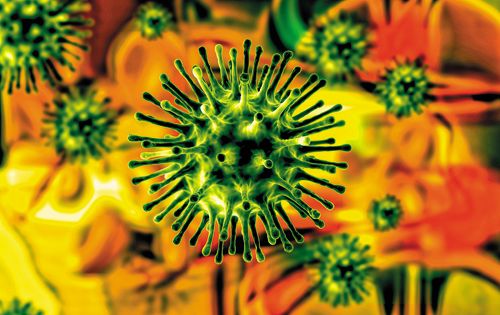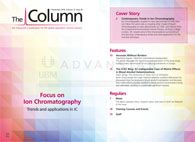Investigating Influenza Virus Particle Size Distribution Using Size-Exclusion Chromatography
Researchers have investigated the use of size-exclusion chromatography (SEC) for size distribution analysis of influenza virus particles.
Photo Credit: Liya Graphics/Shutterstock.com

Researchers have investigated the use of size-exclusion chromatography (SEC) for size distribution analysis of influenza virus particles (1).
Influenza pandemics have been a common occurrence throughout history, devastating continents and countries with drastically differing mortality rates. This variation in mortality rate stems from great variation present within the influenza genome. However, with the advent of vaccination and a greater understanding of the influenza virus, controlling those outbreaks has become easier. However, the complexity of the influenza virus demands a complex vaccine, which in turn demands robust vaccine analysis methods.
The influenza vaccine utilizes inactivated whole virus particles to be effective and, according to the European Pharmacopoeia, requires 15 µg of haemagglutinin (HA) antigen for each present virus strain in a trivalent human vaccine to be released (2). One of the two most abundant surface proteins in influenza A viruses, HA quantity is the guiding parameter by which vaccine effectiveness is judged.
Currently, HA quantification relies on two methods: the single radial immunodiffusion (SRID) assay and the HA assay. While SRID is based upon antigen binding and is considered the gold standard for the release of human vaccines, the HA assay is more antiquated relying on the clumping of red blood cells. While the HA assay is widely accepted, it has a number of flaws including the lack of standardization, its discrete format, deviations as a result of red blood cell ageing (3), and secondary interactions of pH, buffer ions (4), and other compounds in complex virus samples, as well as providing no insight into the size distribution of virus particles.
Addressing these issues has grown in importance in the last few years, as authorities push for deeper understanding and control through process analytical technologies. Public institutions, such as the European Medicine Agency (EMA), encourage research in the field to complement the SRID assay (5) and investigating size, content, and immunogenicity of aggregates in the drug product or substance is recommended.
To address this issue, researchers have recently turned to SEC because it is nonâdestructive and has been used for decades to analyze the aggregate and fragment content of therapeutic proteins (6). Despite its promise, challenges remain in implementing SEC in influenza particle investigations. The availability of SEC columns that allow for size distribution of large virus particles is limited, and there are issues surrounding adsorption.
Researchers developed a comparatively robust method regarding different buffer systems, ionic strength, and additive concentrations. They confirmed the results by dynamic light scattering and demonstrated the methods applicability with three different influenza virus samples.
The researchers then used SEC to determine valuable data regarding the size distribution of influenza virus samples. This data, when considered in combination with data gained from HA assays and SRID, provides a much more detailed picture of HA activity. The complementary technique may benefit future purification processes with a more detailed picture of virus size distribution and how it is affected during the different steps of downstream processing.- L.B.
References
- J. Vajda et al., J. Chroma. A1465, 117–125 (2016).
- L. Opitz, J. Salaklang, H. Büttner, U. Reichl, and M.W. Wolff, Vaccine25, 939–947 (2007).
- C.M. Thompson, E. Petiot, A. Lennaertz, O. Henry, and A. Kamen, J. Virol.10, 141 (2013).
- G.L. Miller, J. Exp. Med.80, 507–520 (1944).
- European Medicines Agency, Guideline on Influenza Vaccines - Quality Module (2014) http://www.ema.europa.eu/docs/en_GB/document_library/Scientific_guideline/2014/06/WC500167817.pdf
- P. Hong, S. Koza, and E.S.P. Bouvier, J. Liq. Chromatogr. Relat. Technol.35, 2923–2950 (2012).

Determining the Effects of ‘Quantitative Marinating’ on Crayfish Meat with HS-GC-IMS
April 30th 2025A novel method called quantitative marinating (QM) was developed to reduce industrial waste during the processing of crayfish meat, with the taste, flavor, and aroma of crayfish meat processed by various techniques investigated. Headspace-gas chromatography-ion mobility spectrometry (HS-GC-IMS) was used to determine volatile compounds of meat examined.
Accelerating Monoclonal Antibody Quality Control: The Role of LC–MS in Upstream Bioprocessing
This study highlights the promising potential of LC–MS as a powerful tool for mAb quality control within the context of upstream processing.

.png&w=3840&q=75)

.png&w=3840&q=75)



.png&w=3840&q=75)



.png&w=3840&q=75)








